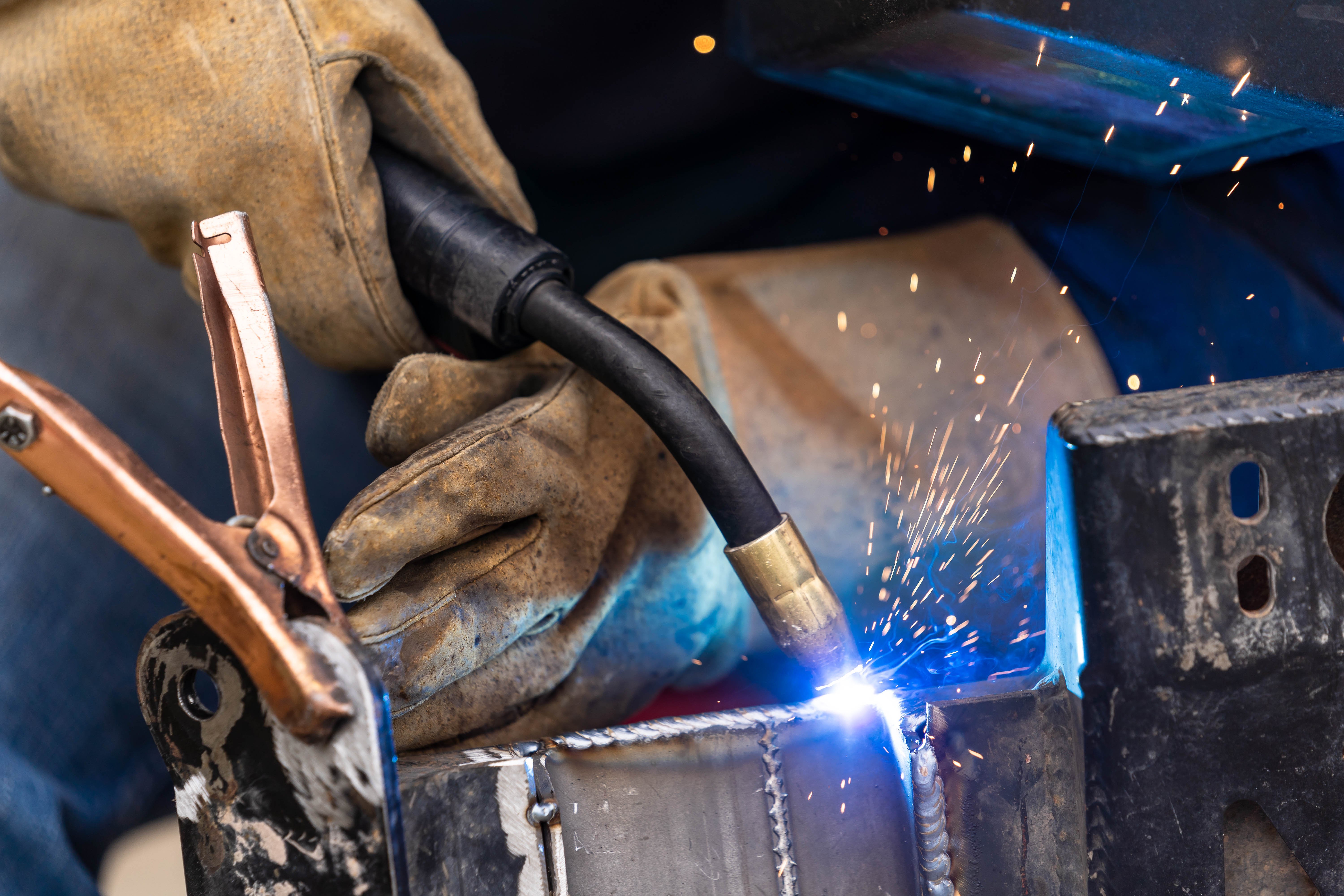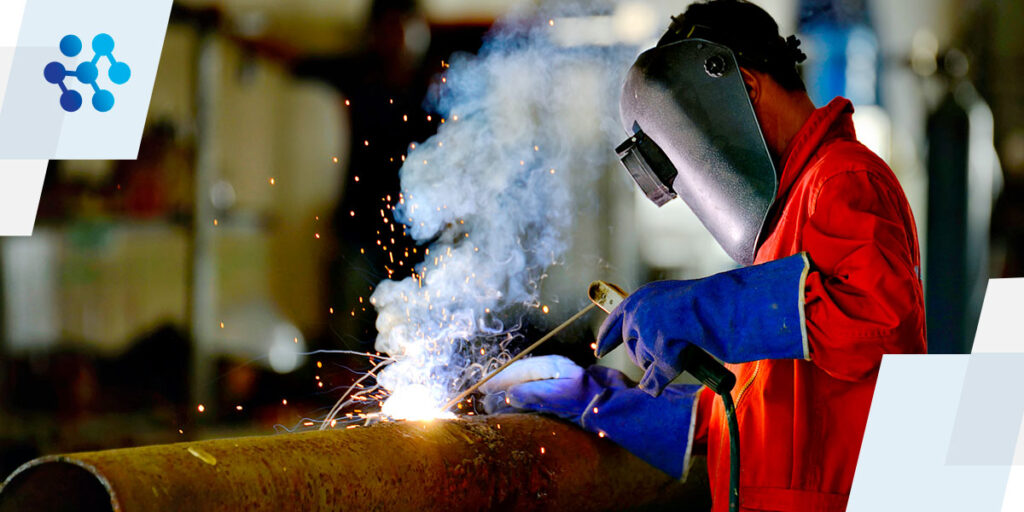Usual Welding Repair Work Issues and Exactly How to Address Them Properly
Welding repair services typically come across a variety of problems that can endanger the integrity of the end product. Typical problems include inadequate infiltration, porosity, and imbalance, to name a few. Each flaw presents unique challenges that need details methods for resolution. Recognizing these problems is important for welders aiming to improve their skills and end results. This discussion will discover these usual welding repair work concerns and efficient methods to resolve them.
Inadequate Penetration
Inadequate infiltration occurs when the weld steel falls short to completely fuse with the base material, causing weak joints and possible structural failings. This concern typically originates from inadequate heat input, incorrect electrode angle, or improper welding rate. Welders might encounter insufficient penetration because of a miscalculation of the required parameters for a certain material density or type. Additionally, contamination on the base product's surface area can impede effective bonding, worsening the problem. To resolve insufficient penetration, welders need to guarantee proper setups on their devices and preserve a tidy job surface. Regular evaluation of welds is recommended to identify any kind of shortages early, permitting timely modifications and the prevention of endangered architectural honesty in bonded settings up.
Porosity
Porosity is a common issue in bonded joints that materializes as little gas bubbles entraped within the weld steel. This flaw can jeopardize the honesty of the weld, bring about lowered strength and possible failing under tension. Fabrication. Porosity normally emerges from contamination, moisture, or inappropriate welding methods, which permit gases to leave into the molten weld pool. To resolve porosity, welders should assure appropriate surface preparation, keep a clean functioning environment, and use suitable welding criteria. In addition, selecting the best filler product and shielding gas can reduce gas entrapment. Routine evaluation and testing of welds can help determine porosity early, assuring timely restorative activities are taken, thereby maintaining the high quality and integrity of the welded framework
Imbalance
Misalignment in welding can arise from numerous factors, consisting of incorrect configuration and thermal expansion. Comprehending the root creates is crucial for reliable resolution. Several modification methods are available to realign elements and guarantee structural integrity.
Causes of Imbalance
Welding imbalance typically stems from a range of underlying issues that can compromise structural honesty. One primary cause is improper fit-up of parts before welding, which can lead to voids and unequal surface areas. Variants in thermal development during the welding procedure can also result in distortion, particularly if the materials being signed up with have different coefficients of expansion. In addition, insufficient clamping and fixturing may stop working to hold components securely in position, causing motion during welding. Poorly kept devices, including welding devices and devices, may present incongruities in the weld grain, additional adding to misalignment. Operator error, stemming from not enough training or experience, can also play a substantial role in producing misaligned welds.

Improvement Techniques Available
Dealing with imbalance successfully needs a mix of corrective methods tailored to the details problems handy. One usual technique is using jigs or components to hold parts in the proper placement throughout welding, ensuring consistent alignment. In addition, pre-heating the materials can help reduce distortion and boost fit-up. For significant imbalance, mechanical realignment techniques, such as utilizing hydraulic jacks or clamps, can be employed to remedy the setting before welding. Post-weld warm therapy might also be necessary to alleviate stress and anxieties brought on by misalignment. Lastly, careful evaluation and change throughout the configuration phase can stop imbalance issues from becoming considerable troubles, promoting a smoother welding process and boosting general structural integrity.
Distortion
Distortion is a typical challenge in welding that can arise from different aspects, consisting of irregular cooling and heating. Recognizing the root causes of distortion is necessary for applying efficient avoidance strategies. Addressing this issue not just enhances structural stability but also boosts the overall quality of the weld.
Root causes of Distortion
When based on the intense heat of welding, materials usually undertake modifications that can cause distortion. This sensation mainly develops from thermal development and tightening throughout the welding process. As the weld location heats up, the material broadens; upon cooling, it contracts, which can produce interior anxieties. On top of that, irregular home heating across a work surface can worsen these stresses, causing warping or bending. The kind of material additionally plays a considerable function; metals with differing thermal conductivity and coefficients of growth might respond differently, causing unpredictable distortions. Bad joint layout and inadequate fixturing can add to imbalance during welding, increasing the possibility of distortion. Comprehending these reasons is essential for efficient welding repair and prevention methods.
Avoidance Techniques
Efficient avoidance techniques for distortion throughout welding focus on controlling warmth input and making sure proper joint style. Keeping a consistent warmth input assists to minimize thermal expansion and contraction, which can lead to distortion. Making use of strategies such as pre-heating the workpiece can also decrease the temperature slope, promoting uniform home heating. In addition, choosing proper joint layouts, such as T-joints or lap joints, can boost stability and lower stress and anxiety focus. Executing correct fixturing to secure the work surfaces in position even more help in keeping placement throughout the welding process. Staggered welding series can disperse warm a lot more evenly, protecting against local distortion. By using these techniques, welders can significantly lower the chance of distortion and enhance the general high quality of their welds.
Splitting
Cracking is a typical problem run into in welding repair services, typically resulting from different aspects such as inappropriate cooling prices, material selection, or poor joint prep work. The event of cracks can considerably endanger the integrity of the weld, leading to possible failures during operation. To address this issue, welders have to first analyze the origin, making certain that products are compatible and suitably chosen for the specific application. Additionally, controlling the air conditioning rate during the welding process is important; quick cooling can generate stress and anxiety and lead to cracking. Correct joint layout and preparation additionally add to reducing the threat. Implementing these techniques can improve weld high quality and sturdiness, inevitably decreasing the chance of splitting in ended up weldments.

Incomplete Combination
A significant concern in welding repair services is insufficient fusion, which occurs when the weld metal does not appropriately bond with the base product or previous weld passes - Belgrade. This issue can lead to weaknesses in the joint, potentially compromising the honesty of the welded structure. Aspects adding to insufficient combination consist of not enough warmth input, incorrect welding technique, and contamination of this contact form the surfaces being joined. To resolve this home concern properly, welders need to ensure correct pre-weld cleansing and surface preparation, as well as change their welding criteria to accomplish sufficient penetration and blend. Normal evaluation throughout the welding process can additionally assist identify incomplete fusion early, permitting timely rehabilitative procedures to boost the overall quality of the weld
Overheating
While welding repair work can enhance architectural integrity, overheating presents a considerable challenge that can cause product degradation. Extreme heat during welding can modify the mechanical homes of metals, causing reduced toughness, enhanced brittleness, and warping. This phenomenon is particularly crucial in high-stress applications where structural dependability is critical. Recognizing getting too hot can include visual assessments for staining or distortion, along with monitoring temperature during the welding procedure. To mitigate the risks related to getting too hot, welders ought to utilize right here proper strategies, such as controlling heat input, adjusting traveling speed, and making use of appropriate filler products. Additionally, implementing pre- and post-weld warm therapies can aid recover product residential or commercial properties and improve the overall quality of the repair service, ensuring long-lasting performance and safety and security.
Regularly Asked Questions
What Are the Usual Signs of a Welding Issue?

Just How Can I Check My Welds for Quality?
To check welds for quality, one can utilize aesthetic examinations, ultrasonic screening, and radiographic methods. Each method assures structural honesty, recognizes problems, and validates adherence to specified criteria, ultimately boosting the integrity of the welded joints.
What Safety and security Precautions Should I Take While Welding?
When welding, one should prioritize safety and security by putting on appropriate individual protective devices, making sure appropriate air flow, securing flammable materials away, keeping a tidy work space, and recognizing surroundings to avoid injuries and crashes.
Can I Fix a Weld Without Redoing the Entire Joint?
Repairing a weld without remodeling the entire joint is feasible, relying on the damage (Montana Mobile Welding and Repair Welding). Techniques such as grinding, adding filler product, or using a welding process can effectively attend to particular defects while preserving the surrounding structure
What Equipment Are Crucial for Efficient Welding Fixes?
Necessary devices for efficient welding fixings include a welding equipment, cable brush, grinder, safety gear, clamps, and filler products. Each device plays a crucial duty in making certain top quality and safety throughout the repair work procedure. Porosity usually emerges from contamination, wetness, or incorrect welding methods, which allow gases to get away right into the molten weld pool. Inadequately conserved devices, consisting of welding machines and devices, may present incongruities in the weld bead, more adding to imbalance. When subjected to the intense warm of welding, materials commonly go through adjustments that can lead to distortion. Breaking is a typical concern come across in welding repair services, typically resulting from various elements such as incorrect air conditioning rates, product option, or insufficient joint preparation. A significant problem in welding fixings is incomplete combination, which happens when the weld metal does not adequately bond with the base product or previous weld passes.
Comments on “Advanced weld correction methods from Belgrade Welding professionals”